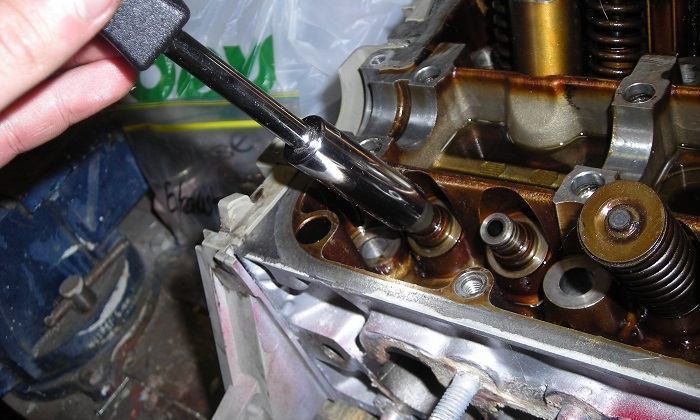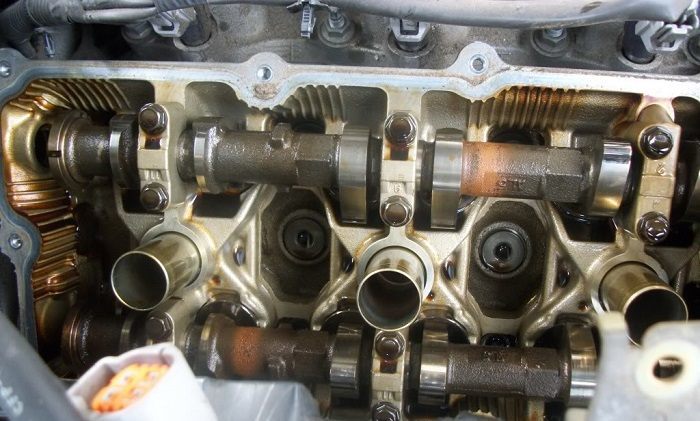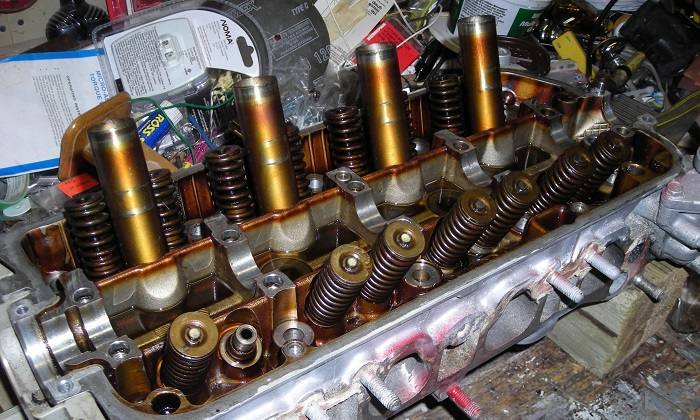by Joshua Thomas
With more than 30,000 working parts in a conventional vehicle, it is often easy to forget about some components, and you will only remember them when they break down or wear out and hence need replacement.
Valve seals are a good example of one such part that many motorists hardly pay any attention to. Unless you are a professional mechanic, the chances are that you might not even know what this valve is or even what it does.
With that said, when it is time to replace it, you will be better off knowing how much you are likely to spend and also the symptoms to watch out for to know when you need to do it. Luckily, this is what this piece is all about.

When an engine is running air has to be mixed with fuel and then transferred to the combustion chamber for combustion. The engine will include valves that are tasked with regulating the amount of the air and fuel mixture that gets into the cylinders for combustion.
These valves will also be fitted with sleeves and seals, which are meant to ensure that combustion gasses do not leak into the chamber and contaminate the fuel.
Also, the valve seals are meant to prevent the engine oil from getting sucked into the valve chamber, which can also have a catastrophic effect.
To sum it all up, the main function of a valve seal is to ensure that there are no foreign objects in the combustion chamber and that only the air and fuel mixture is kept in there. The valve seal is also useful in maintaining pressure inside the chamber thanks to the rubber construction.

Before you get to the part where you have to part with money to replace your valve seal, you first need to be able to know when it is time to replace the seal. The good news is that there are several reliable signs and symptoms that you can use, and the following are just some of them.
While engine oil is a consumable vehicle fluid tasked with keeping your engine cool and ensuring efficient lubrication of the different metal components, this does not mean your vehicle should use up too much of it.
If your vehicle is using up too much oil, this is a good indication that there is a leak somewhere, and in many instances, bad or failing valve seals will be the source of the leakage.
The leakage might persists over a long period, and you will hence find yourself having to refill the engine oil more frequently.
Besides the vehicle using up too much engine oil, you may also start noticing the oil getting dirty and black faster than usual, which is often an indication that it is burning up. When you see this symptom, it is important to have your car checked immediately.
When going down a steep road without pressing down on the gas or perform off-throttle braking, the intake manifold will create a vacuum that then forces oil into the engine front. The downhill slope also helps to facilitate this oil movement.
If your vehicle does not have a good valve seal, some of this oil can find its way to the fuel combustion chamber when you press down the accelerator to move the car. The presence of the oil in the chamber will then be manifested by the production of excess smoke in the exhaust.
It is easy to notice a problematic valve seal when your car is idling. When the car is stationary, the intake manifold will shut down the throttle, and hence forcing oil to be sucked into the stem of the valve.
When you accelerate, the oil in the valve's stem will be sucked into the combustion cylinder, and it is then burnt which causes the emission of white smoke from the exhaust.
But, it is worth noting that this symptom is only reliable when you are stopping and moving rigorously such as when stuck in heavy traffic. When driving on the highway, this white smoke will disappear.
As your valve seals start to deteriorate, you will start seeing smoke emission in smaller quantities before it disappears. However, as the problem worsens, the smoke will increase significantly.
The white smoke will last longer and not go away regardless of the speed you are driving. This white smoke is a sign there is an issue with the valve seal and you need to have it checked and replaced immediately before the issue leads to more serious engine problems.
When you have a faulty valve seal, the pressure in the engine's combustion chamber will be reduced greatly, which in turn reduces the overall accelerating power that you get when driving.
And while a reduction in power can be annoying, the best thing about it is that it is easy to detect, and so you can easily determine your engine has a valve seal issue.
Read More: Car Losing Power when Accelerating

Because rubber seals are simple rubber parts, they will not cost much to buy and replace. Also, these are quite sturdy parts that will not break easily, and so you will hardly ever have to replace them, and sometimes you might not even replace them for the lifetime of the vehicle.
Depending on the vehicle model that you drive and where you are getting the service from, you can spend anywhere from $40 to $150 to buy a replacement valve seal. But, if you add in the labor cost, the total cost can go up to $400 or even more.
A typical professional mechanic will charge around $100 per hour, and given that replacing the valve seal takes at least 3 hours, you should be ready to part with $400 assuming the specific replacement valve seal for your vehicle costs around $100.
For some vehicles, the cost can be even higher than this as the job will require a complete engine disassembly to get to the valve seals. In such an instance, you can expect to pay upwards of $1,000.
When you determine that you have bad seal valves, it is important to make sure that you do not drive the vehicle further if you can avoid it. If you keep driving the vehicle, you will only make the problem worse.
A simple valve seal problem can easily lead to catastrophic engine failure, which will be more costly to repair.
If you are in a place where you have no option but to keep driving the vehicle, it is important to maintain moderate speeds as you drive it to the mechanic or home. For some vehicles, the limp mode will kick in and restrict the vehicle to a specific speed range.
The other important thing that you need to do when you have a faulty valve seal is to have it checked by a professional mechanic.
While it is still possible to diagnose and fix the problem on your own, if you have adequate mechanic skills, things can be a little more complicated than they appear. Hence, it is better to leave the job to a professional.
Valve seals are simple rubber engine components, but they play a crucial role, and hence when you have a faulty one, you need to have it replaced as soon as possible to ensure your engine maintains peak performance.
Like when replacing any other engine component, what you end up paying will depend on various factors such as the vehicle type and model, availability of the replacement part, and also where you are getting the job done.
However, in many instances, replacing the valve seal will cost anywhere between $150 and $500 depending on how much the part costs, and also the time it takes to replace it, and hence the labor cost.
Lastly, you also need to know, the symptoms to watch out for when you have a faulty valve seal to ensure you can deal with the problem in good time.
Sources
 |
 |
 |
 |

About Joshua Thomas
Joshua Thomas just simply loves cars and willing to work on them whenever there's chance... sometimes for free.
He started CarCareTotal back in 2017 from the advices of total strangers who witnessed his amazing skills in car repairs here and there.
His goal with this creation is to help car owners better learn how to maintain and repair their cars; as such, the site would cover alot of areas: troubleshooting, product recommendations, tips & tricks.
Joshua received Bachelor of Science in Mechanical Engineering at San Diego State University.